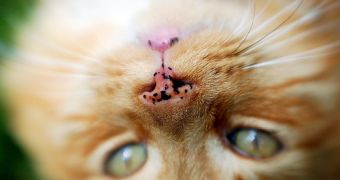In Sweden there is an annual “Euromelanoma Day” campaign which is designed to prevent skin cancer among the general public, but even this big event is not enough to reach out to some groups that are at risk of skin cancer, so researchers from the University of Gothenburg came out with new ways of encouraging people to go to a dermatologist.
Behind this campaign there is the Euromelanoma group, a part of the EADV – Europe's largest professional organization for dermatology and venereology.
During the Euromelanoma Day, in Sweden alone, there are 3,000 examined patients, and nearly 1% of them have malignant melanomas, 6% have basal cell carcinomas (a form of cancer more common but less dangerous) and 10% are in the early stages of a third form of skin cancer called squamous cell carcinoma.
John Paoli, a researcher at the Sahlgrenska Academy and specialist at Sahlgrenska University Hospital's dermatology clinic, spoke at the dermatologist conference, and said that “in May every year we publish information in the press and media on the risks of excess sunbathing and the warning signs of skin cancer.
“We also offer slots with dermatologists on Euromelanoma Day for the examination of suspicious moles etc without having to be referred by a doctor.
“In a bid to reach patients who are more likely to develop skin cancer, we're trying to introduce new ways of booking the limited number of slots available on the day itself, partly by introducing an age threshold of 18.
This means that more older patients can be screened for skin cancer and doctors will have less 'unnecessary' visits from younger patients who are less likely to have the disease.
“This means that the Swedish patients who are examined are, on average, ten years older than their European counterparts, which is why we find more tumors,” Paoli said.
Sweden introduced another approach different from the rest of Europe establishing that patients will have to pay the going rate for a visit to a dermatologist.
This is another way to make sure that people look closely at their skin before going to a dermatologist and that they really make an appointment for another reason other than peace of mind.
Paoli says that hopefully, “these initiatives will lead to fewer deaths and lower costs to society, as a proper diagnosis from a dermatologist has proved far more effective than unnecessary testing at primary care level.”

 14 DAY TRIAL //
14 DAY TRIAL //